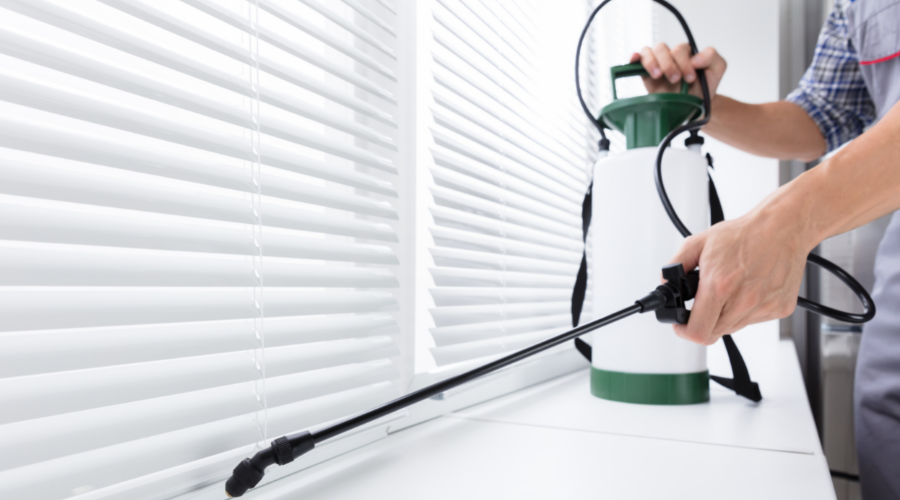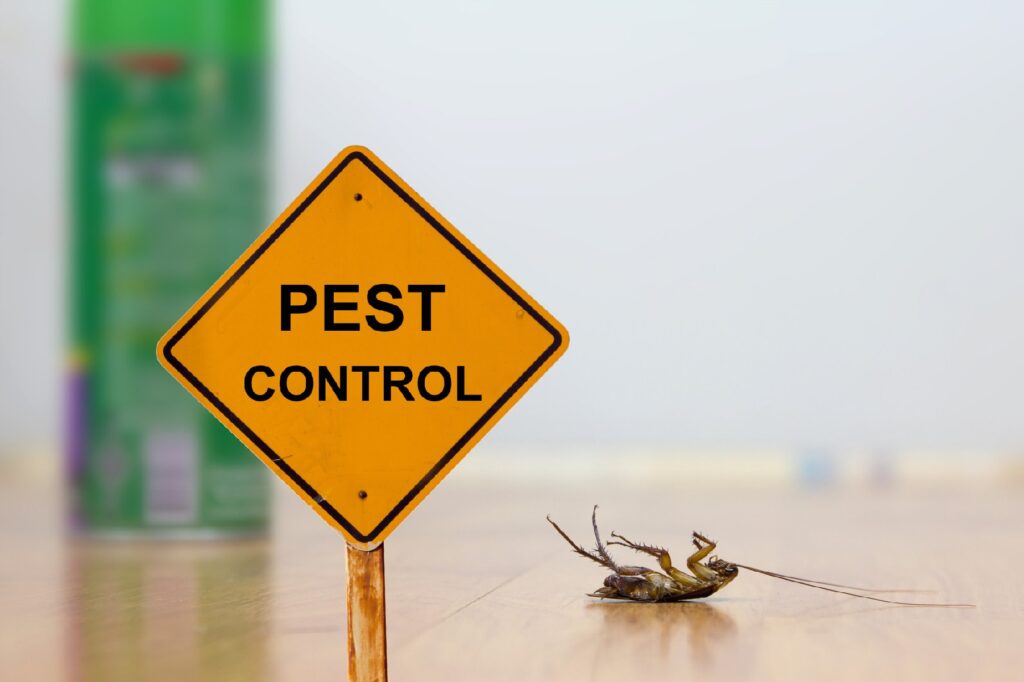Checking Out Different Techniques and Methods for Comprehensive Insect Control in Residential Spaces
The landscape of bug control in property areas has developed substantially, requiring a detailed understanding of numerous techniques that can be utilized for efficient management. Traditional chemical therapies, while reliable, are progressively being matched by environmentally friendly alternatives and Integrated Pest Management (IPM) approaches. House owners need to consider preventative measures, such as normal tracking and accurate parasite recognition, to maintain a healthy and balanced atmosphere. However, the actual difficulty hinges on striking an equilibrium between efficiency and security-- an exploration that discloses the nuances of each strategy and its ramifications for sustainable living.
Understanding Bug Control Essential
Effective bug control is essential for preserving a risk-free and healthy and balanced living setting. Understanding the fundamentals of parasite control involves acknowledging the sorts of pests that frequently attack residential spaces, the possible threats they position, and the value of safety nets. Usual household insects consist of rats, insects, and various other undesirable animals that can compromise health, damages residential or commercial property, and activate wellness concerns.
A crucial very first action in pest control is determining the certain pests present. This can include evaluating areas such as basements, attic rooms, and kitchens, where bugs are most likely to flourish. Once identified, it is essential to understand their habits, breeding cycles, and favored settings, which can notify suitable control strategies.
Safety nets are basic to efficient insect management. These consist of sealing entry factors, preserving cleanliness, and reducing mess to get rid of hiding places. Furthermore, proper food storage space and waste administration can significantly lower the appeal of a home for pests.

Conventional Chemical Therapies
Amongst the various pest control techniques, standard chemical therapies have actually long been used to resolve problems in residential spaces. These treatments generally include the application of chemical pesticides developed to get rid of insects such as bugs, rodents, and other unwanted organisms. The effectiveness of these chemicals can vary, relying on the sort of parasite, the solution of the chemical, and the approach of application.
Typical classes of conventional chemical treatments include pesticides, fungicides, herbicides, and rodenticides, each tailored to combat specific parasites. Pesticides, as an example, may target ants, cockroaches, or termites, while rodenticides are particularly developed to control rodent populaces. These chemicals are usually offered in different forms, consisting of lures, sprays, and granules, enabling homeowners flexibility in application.
Regardless of their efficiency, traditional chemical therapies increase concerns pertaining to prospective toxicity to human beings, family pets, and useful organisms in the setting. It is vital for property owners to meticulously comply with application standards and security preventative measures to decrease threats. Integrated Bug Management (IPM) methods can match these therapies, guaranteeing a more all natural approach to pest control while maximizing efficacy and safety and security in property settings.
Eco-Friendly Pest Control Options
Eco-friendly insect control alternatives are acquiring appeal as home owners seek safer and a lot more lasting choices to conventional chemical treatments. These techniques focus on the wellness of both residents and the atmosphere, lessening the influence of parasite control practices.
One widely adopted green approach is using natural repellents originated from crucial oils, such as pepper mint and citronella. These oils not just hinder pests but also provide enjoyable aromas for indoor spaces. Diatomaceous planet, a powder made from fossilized algae, acts as an all-natural pesticide by damaging the exoskeletons of bugs upon contact, leading to dehydration.
Another effective strategy involves promoting biodiversity in gardens and yards. Introducing useful insects, such as ladybugs and lacewings, can naturally regulate pest populaces (Chicago pest control for restaurants). Furthermore, employing catches made from eco-friendly materials can help record and get rid of bugs without causing injury to the click to read more ecological community
Routine maintenance, such as securing entrance points and correct cleanliness, further boosts the efficiency of eco-friendly parasite control. House owners can take proactive measures to stop invasions, guaranteeing an extra sustainable living setting while successfully managing pest-related concerns.
Integrated Insect Monitoring Methods
Executing incorporated insect management (IPM) methods offers a thorough method to pest control that emphasizes prevention and lasting services. IPM incorporates multiple methods, concentrating on recognizing insect actions, life cycles, and environmental dynamics to lessen parasite populations successfully. This complex technique focuses on non-chemical approaches, such as biological control, environment manipulation, and cultural methods, to lower reliance on pesticides.
A fundamental facet of IPM is keeping an eye on and recognizing pests precisely. This entails regular evaluations and the facility of activity thresholds to establish when intervention is needed. By understanding the particular bugs influencing household environments, targeted interventions can blog here be employed, decreasing the probability of unneeded chemical applications.
By promoting an environment that inhibits insect infestations-- such as securing entrance factors and handling moisture-- homeowners can substantially mitigate the threat of bug problems. With these techniques, IPM not just addresses present parasite problems but likewise fosters lasting practices that advertise long-term parasite management success.
Preventative Actions for House
To repel prospective pest invasions, property owners need to embrace an aggressive technique that stresses preventative steps. This starts with maintaining a tidy and organized space, as clutter and food particles attract bugs. Chicago wasp nest removal. Frequently vacuuming, sweeping, and cleaning down surfaces can considerably lower the risk of invasions
In addition, securing entry points is critical. Homeowners ought to check home windows, doors, and structure cracks for spaces that might enable bugs accessibility to the home. Making use of caulk and weather stripping can successfully obstruct these entranceways.
Correct food storage is another crucial procedure. Keeping food in impermeable containers and without delay tidying up spills or crumbs helps deter rodents and insects.
Furthermore, handling outside atmospheres can stop bugs from elbowing in on household rooms. Homeowners should ensure that drainage systems are functioning well, and landscape design is maintained clean. Cutting bushes and trees away from the house and removing standing water can further diminish parasite environments.

Verdict
Finally, efficient pest control in household index rooms requires a multifaceted strategy that integrates conventional chemical treatments with green methods and Integrated Pest Monitoring techniques. By focusing on preventative procedures, such as preserving sanitation and sealing entry factors, homeowners can dramatically decrease pest events. Regular surveillance and precise parasite identification better improve management initiatives. Ultimately, a well balanced methodology that includes natural repellents and the very least toxic chemicals promotes a safe and healthy and balanced living setting while attending to pest-related challenges.
Understanding the essentials of insect control entails identifying the kinds of insects that frequently attack household rooms, the potential risks they position, and the significance of precautionary procedures.A critical first step in pest control is identifying the specific insects present. Integrated Pest Management (IPM) techniques can complement these treatments, ensuring a more holistic approach to pest control while taking full advantage of effectiveness and security in domestic settings.
Executing integrated parasite monitoring (IPM) approaches uses a detailed method to pest control that emphasizes prevention and lasting options.In final thought, effective pest control in household areas requires a multifaceted strategy that integrates conventional chemical treatments with green techniques and Integrated Insect Management approaches.